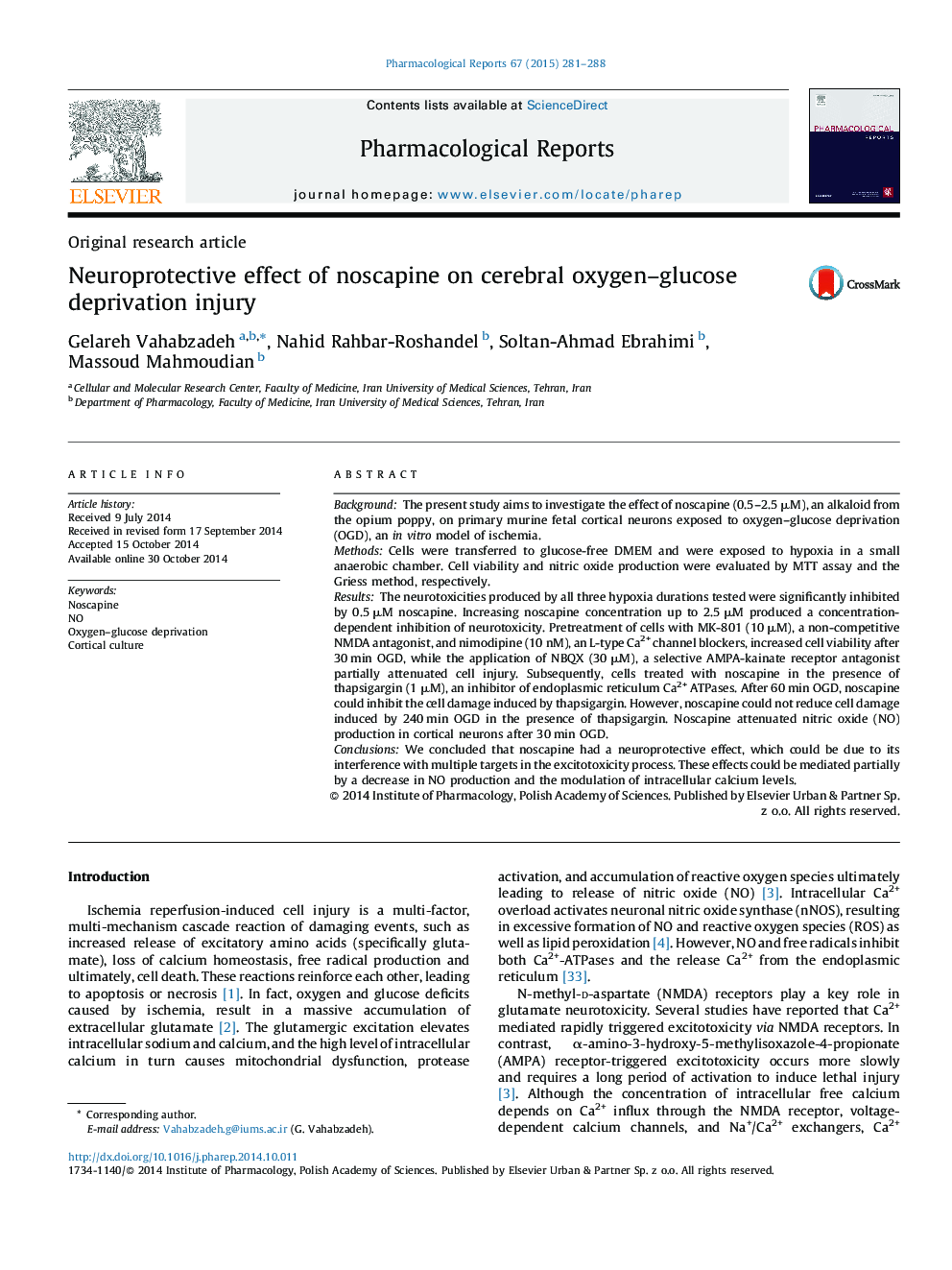| Article ID | Journal | Published Year | Pages | File Type |
|---|---|---|---|---|
| 2011991 | Pharmacological Reports | 2015 | 8 Pages |
BackgroundThe present study aims to investigate the effect of noscapine (0.5–2.5 μM), an alkaloid from the opium poppy, on primary murine fetal cortical neurons exposed to oxygen–glucose deprivation (OGD), an in vitro model of ischemia.MethodsCells were transferred to glucose-free DMEM and were exposed to hypoxia in a small anaerobic chamber. Cell viability and nitric oxide production were evaluated by MTT assay and the Griess method, respectively.ResultsThe neurotoxicities produced by all three hypoxia durations tested were significantly inhibited by 0.5 μM noscapine. Increasing noscapine concentration up to 2.5 μM produced a concentration-dependent inhibition of neurotoxicity. Pretreatment of cells with MK-801 (10 μM), a non-competitive NMDA antagonist, and nimodipine (10 nM), an L-type Ca2+ channel blockers, increased cell viability after 30 min OGD, while the application of NBQX (30 μM), a selective AMPA-kainate receptor antagonist partially attenuated cell injury. Subsequently, cells treated with noscapine in the presence of thapsigargin (1 μM), an inhibitor of endoplasmic reticulum Ca2+ ATPases. After 60 min OGD, noscapine could inhibit the cell damage induced by thapsigargin. However, noscapine could not reduce cell damage induced by 240 min OGD in the presence of thapsigargin. Noscapine attenuated nitric oxide (NO) production in cortical neurons after 30 min OGD.ConclusionsWe concluded that noscapine had a neuroprotective effect, which could be due to its interference with multiple targets in the excitotoxicity process. These effects could be mediated partially by a decrease in NO production and the modulation of intracellular calcium levels.
